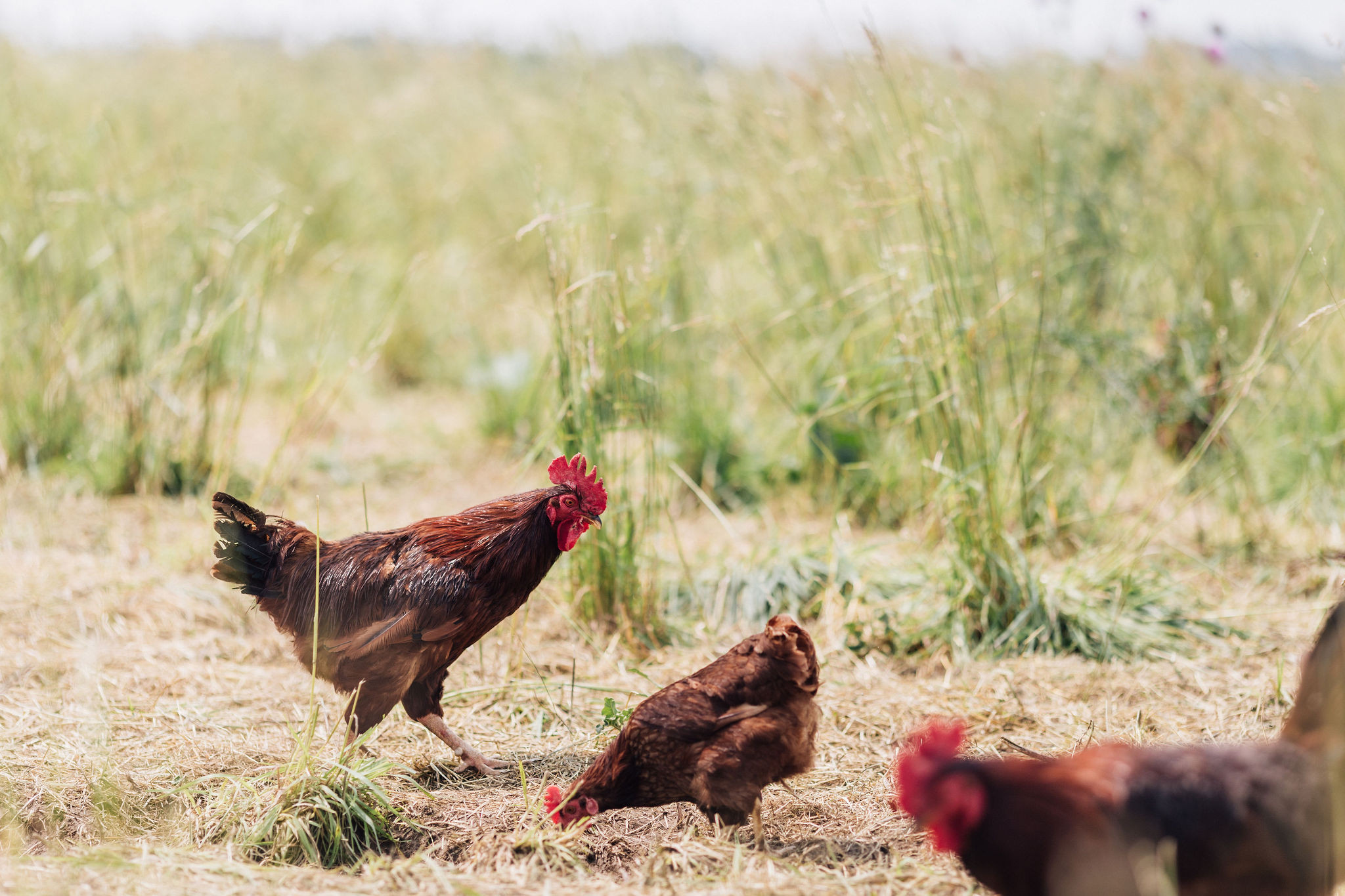The inside scoop on one of the meat processors
posted on
January 10, 2020
Have you seen the videos exposing terrible meat processing plants? I have, and they’re pretty terrifying and nauseating.
You know what I’m talking about. Monstrous buildings, overcrowded animals packed together in pens or crates, big conveyor belts with hanging carcasses, big machinery to do odd things like sliding chicks down a chute, and unacceptable conditions and expectations for human employees.
So, when I visited Aaron, the farmer, a few weeks ago, I was excited and a bit terrified when he offered to take me to visit one of his meat processors - Belmont Meats.
We were going because I had a car, and Aaron needed to pick up some of his newly processed meat for product pics.
When I got there, my first reaction was, “This is it!?”
We pulled up to a small well-kept building set amidst acres of pasture.
We went in around the front. There was a small office and conference area, and we said hi to the folks having a meeting.
We walked through to the packing room. I saw where they slaughter, butcher, and process the animals. There were about five staff cleaning the butchering room after the day’s work.
The rooms were small and meticulously clean. Even the hanging beef carcasses and discard bins of odd parts were clean. And everything was organized and labeled.
So I guess I need to take a step back. Why was I so surprised by the processor? Well, mainly because it was small and personable, and I was expecting something large and industrial.
It seemed like a really nice place for animals and humans to be. It was physically cold but not mentally cold, if that makes sense.
You see, it’s really difficult for a small farmer to find a processor to work with.
Following the USDA guidelines for meat processing is time consuming and expensive. For this reason, most processors are typically large and wouldn’t deal with a measly farmer that sends any less than hundreds of animals at a time.
Belmont Meats has a different strategy. They value quality over quantity, and they want to work with small farmers.
Belmont Meats treats their animals well, at least for the short time they have them.
Most animals that come are processed that day or the day after. They don’t spend weeks confined and waiting.
They’re fed a natural diet for the few hours they’re in the holding pens. Then, they walk about 50 feet up a short, safe ramp to the room where they are slaughtered.
The conditions at Belmont Meats make for happy employees.
In fact, I know one employee who travels more than two hours to work there during the week. That’s how desirable it is.
It seems laid back and methodical. Every employee does a bit of everything and works together to accomplish a common goal.
Belmont Meats uses all natural ingredients and will work with the USDA to update their special recipes.
A few examples. They use Redmond salt, which is real and unprocessed. They are also open to recipes with NO sugar. They even allow farmers to drop off their own herbs and spices, if they’d like.
So, if you’re concerned with animal welfare, I am now 100% sure that from start to finish, our animals are treated humanely.
Belmont Meats is the farmer’s #1 processor for beef, pork, and poultry. The only things they can’t do (yet) is hot dogs and cured products like bacon and ham. The farmer is really looking forward to the day he can work with them for ALL of his meat products.
If you want to support the cause, check out our 100% grass-fed beef, pastured lamb & goat, pastured woodland pork, and pastured soy-free chicken.
Aaron is serious about ethical farming, and he’s serious about treating his customers with respect. This includes 100% transparency. If you ever have a question, let us know. We’ll do our absolute best to provide an honest, accurate answer ASAP.




